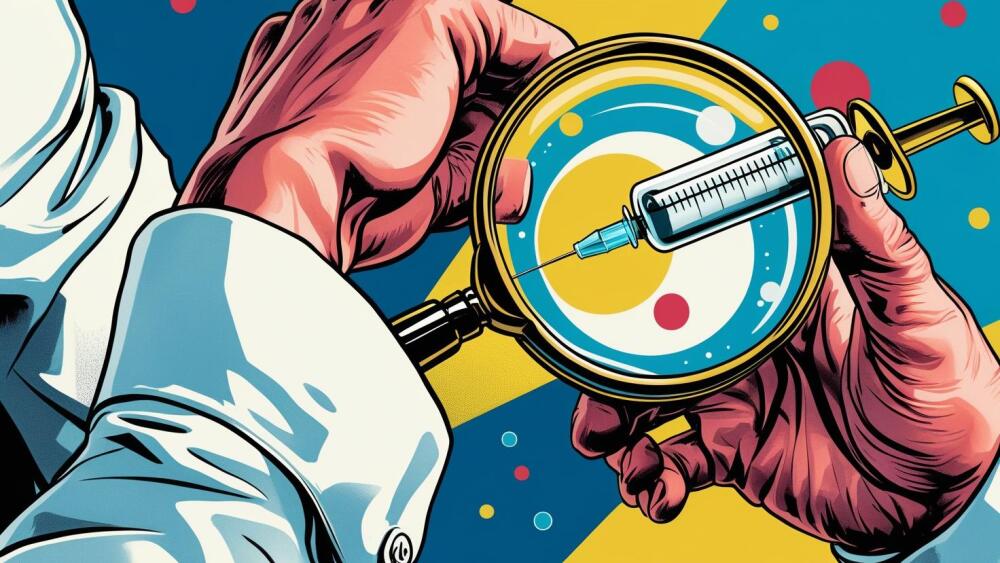On the heels of a Phase III flop for Pfizer’s Duchenne muscular dystrophy gene therapy candidate, the FDA has green lighted the expanded use of Sarepta Therapeutics’ Elevidys.
Update published June 20 at 6:15 p.m. EST.
Sarepta Therapeutics’ gene therapy Elevidys will be available to Duchenne muscular dystrophy (DMD) patients who are at least 4 years old, regardless of whether they can walk, the FDA said Thursday. This expands the former accelerated approval for the gene therapy in four and five year olds who were still ambulatory.
In today’s decision, the agency granted full approval to all patients aged 4 and older with a confirmed mutation in the DMD gene, while giving accelerated approval to non-ambulatory patients. The latter approval is contingent upon the results of an ongoing Phase III study.
The FDA noted in its decision that based on the evidence given by Sarepta, the agency had verified the clinical benefit. While the original study failed to hit the primary endpoint, the review of the secondary and exploratory endpoints was “compelling” enough to show a clinical benefit.
Since the announcement of the expanded approval, Sarepta’s stock price has shot up over 32%.
Original story published June 20 at 4 p.m. EST.
Will Pfizer’s DMD Failure Impact Sarepta’s Looming FDA Decision?
Last week, Pfizer was hit with a major setback as its experimental gene therapy for Duchenne muscular dystrophy, fordadistrogene movaparvovec, was found not to improve motor function versus placebo in boys aged four to seven years in a late-stage trial. Pfizer’s Phase III failure comes just days before an expected June 21 decision by the FDA on whether to expand use and grant full approval of a similar treatment from Sarepta Therapeutics, Elevidys, the only approved gene therapy for the muscle-wasting disease.
While Elevidys has been dogged by questions about its efficacy, analysts anticipate a label expansion and full approval, though how broadly the regulator will expand access remains an open question. Pfizer’s Phase III DMD failure last week is reminiscent of Elevidys, which missed its main goal in a late-stage trial.
In a controversial regulatory decision in June 2023, the FDA granted accelerated approval to Elevidys as the first gene therapy for Duchenne muscular dystrophy (DMD)—currently authorized for 4- and 5-year-olds—despite Elevidys having missed the primary functional endpoint. The regulator’s decision was based on data showing the therapy increased expression of the micro-dystrophin protein, a biomarker the agency determined is “reasonably likely to predict clinical benefit” in DMD patients four to five years of age who are able to walk.
This time around, Sarepta has submitted a supplemental BLA seeking to expand the gene therapy’s label by removing age and ambulation restrictions, while transitioning Elevidys from an accelerated to a traditional approval. It’s a higher regulatory bar, especially given that Sarepta hasn’t released any study data in older patients. But analysts BioSpace spoke to are generally positive about Elevidys’ prospects.
“One drug failure doesn’t necessarily halt the FDA decision on others,” Uy Ear, vice president of U.S. healthcarebiotechnology at Mizuho Securities, told BioSpace. “And in this particular case, I think we’re optimistic . . . we knew that Sarepta was already in label negotiation, and when Pfizer announced their disappointing Phase III results, I think the FDA by this time should have already wrapped things up.”
While no specific data points were given, Pfizer’s CIFFREO Phase III study did not reach its primary and secondary endpoints, such as the 10-meter run/walk velocity and time to rise from floor velocity. However, analysts are not concerned that the late-stage failure will impact Sarepta’s expanded approval for Elevidys.
Kostas Biliouris, director and equity research analyst at BMO Capital Markets, told BioSpace that the failure was “drug-specific.” Sarepta reached its critical secondary endpoints, while Pfizer did not. These factors now put pressure on the FDA to approve the drug and expand the label, according to Biliouris, as Elevidys is the only option in the near- to mid-term.
Biliouris also said there is a big safety difference between the two gene therapies.
Unlike Elevidys, Pfizer’s fordadistrogene movaparvovec has encountered some decidedly negative safety signals. Last month, Pfizer announced that a patient died in the Phase II DAYLIGHT DMD study evaluating the experimental gene therapy. In December 2021, Pfizer was also forced to pause screening and dosing in a Phase Ib study after an unexpected patient death.
Tim Lugo, the group head for biotechnology at William Blair, told BioSpace in an email that while the FDA is reviewing Elevidys on its merit for efficacy and safety, the failure of what was set to be a “next-in-line” program highlights the need for flexibility.
“During the public advisory committee last year, the agency continued to point to the risk that gene therapies posed around the potential ‘one and done’ nature of the products and how dosing of Elevidys, if approved, could complicate dosing of subsequent gene therapies when they are brought to market,” Lugo wrote. “After the failure of the second-in-line program, it forces the question, where and when is that subsequent program to be filed with the agency? There are now a few promising second-generation programs in development, but Pfizer was likely to file in 2024 if successful, but that’s not the case now.”
At the same time, Lugo acknowledged some of Elevidys’ “shortcomings” and added that the FDA could risk letting “perfect be the enemy of the good.” Expanding access beyond the limited label could also start more development in DMD for other therapies, Lugo said.
Biliouris, on the other hand, said the Pfizer failure is, in the end, more favorable for Sarepta. Because the unmet need in the DMD population is still high and limited treatment options are still prevalent, this works in Sarepta’s favor in terms of full approval, he contends.
Unmet Need, Potential Elevidys Market
Elevidys’ current label is limited to 4- and 5-year-olds, which is only about 3% or so of the total DMD population, leaving a vast unmet need. Lugo said that around 300 to 400 boys are born with DMD every year in the U.S., and the disease kills around 400 boys and young adults annually.
Biliouris pegs the DMD population somewhere around 14,000, including ambulatory and non-ambulatory patients.
While Ear said that new gene therapies for DMD are “encouraging,” more potent treatment will be needed as it is currently unknown how many patients will benefit and for how long.
“If you look at the function on the endpoint, they measure time and the differences between patients who are untreated versus those who are treated. While they’re statistically significant, they’re not huge. We definitely need stronger efficacy and we need to know how long these things could last,” Ear said.
With Elevidys being on the cusp of potential expansion and approval, the therapy currently has a market of around 300 to 400 patients, according to Lugo, with approximately 9,500 not having access. In straight numbers, he said the total market value for DMD in the U.S. is around $30 billion, given the premium pricing for Elevidys. However, a label that includes only ambulatory patients would suggest a market opportunity of around $15 billion, Lugo said.
Biliouris’ model only examined the population from ages four through seven years and estimates peak revenues reaching around $3 billion. He estimates Sarepta reaching about 50% of the addressable population, depending on the label.
Ear noted that Sarepta has estimated peak sales of $4 billion but that there are no peak sales in gene therapy as the treatment is one-and-done.
“Reading the tea leaves in their language, it will suggest that they expect a rapid adoption and that they will probably exhaust the prevalence,” Ear said.
Ultimately, Lugo believes the impact of an Elevidys approval and expanded label “will be significant to Sarepta and help fuel further innovations in DMD for the community.”
Tyler Patchen is a staff writer at BioSpace. You can reach him at tyler.patchen@biospace.com. Follow him on LinkedIn.






